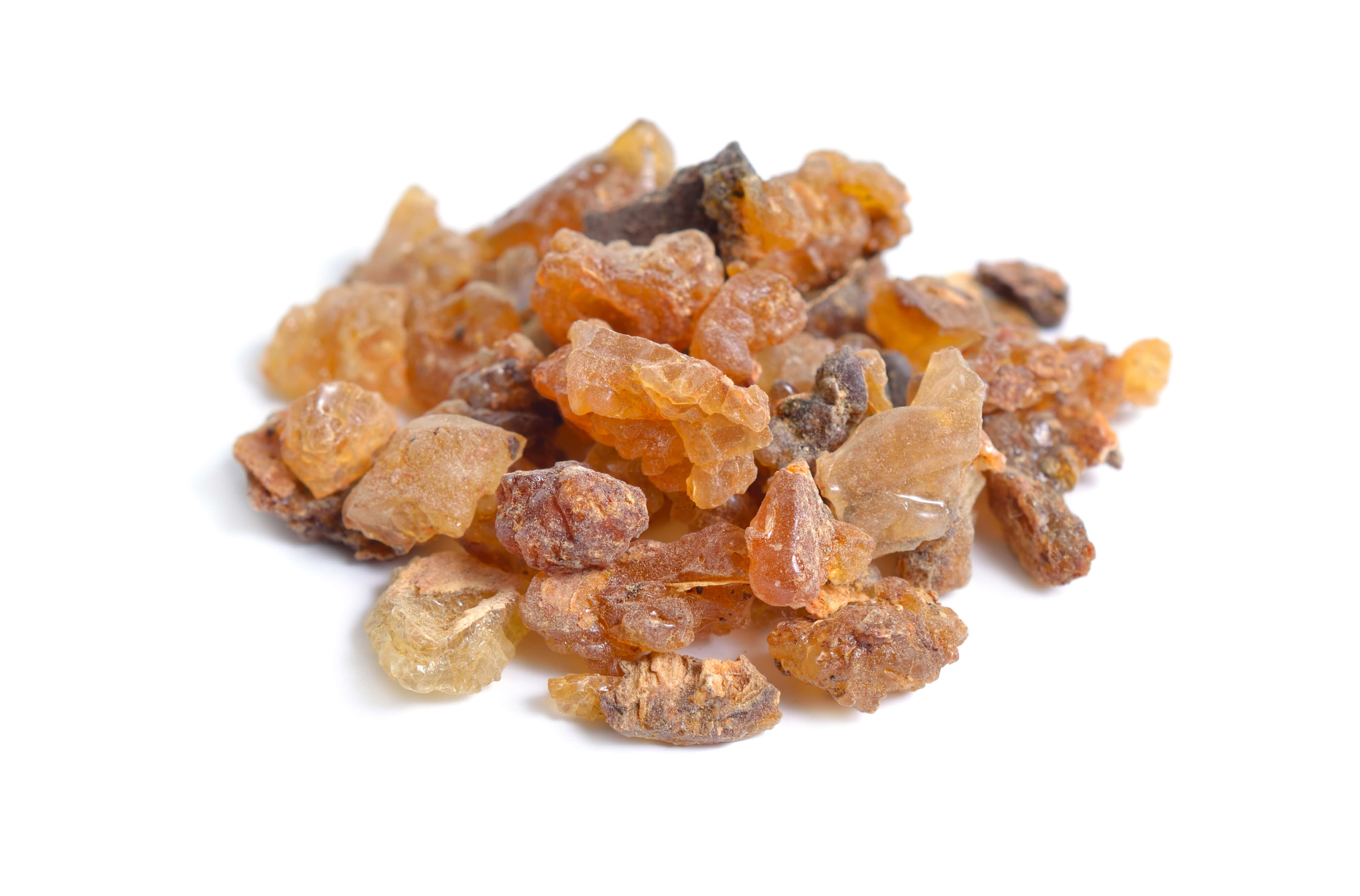
| Company | Ingredient Name | ID | Comments | Naturality | Certifications | Purity | Latin name | Treated part | Geographical origin | MOQ |
|---|---|---|---|---|---|---|---|---|---|---|
|
|
Huile essentielle de Myrrhe - 30 gr | - |
Visit website
|
- | - | - | - | - | - | |
|
|
MYRRH Essential Oil | M_0020005 |
Visit website
|
Naturel | - | - | - | - | - | |
|
|
MYRRHE | B1808 |
Visit website
|
Huile essentielle |



|
- | Commiphora myrrha (Nees) Engl. | Exsudat | Somalie | - |
|
|
MYRRHE | B661 |
Visit website
|
Huile essentielle |

|
- | Commiphora myrrha (Nees) Engl. | Exsudat | Somalie | - |
General Presentation
-
CAS N° : 9000-45-7
-
EINECS number : 232-543-6
-
FEMA number : 2766
-
Appearance : Amber to red liquid
-
Density : 0,990 - 1,035 @20°C
-
Volatility : Heart/Base
-
Price Range : €€€€
Physico-chemical properties
-
Optical rotation : Donnée indisponible
-
Vapor pressure : Donnée indisponible
-
Refractive Index @20°C : Donnée indisponible
-
Acid Value :
-
Flash Point :
Uses
Uses in perfumery :
Myrrh EO is used to provide a natural effect in lavender accords for example, and for a mushroom effect. This effect tends to dominate when overdosed.
Major Components :
- Furanoeudesma-1,3-diene (30 - 35%)
- Furanodiene (15 - 20%)
- Lindestrene (10 - 15%)
- Beta-elemene (5 - 10%)
- B-germacrene (≈4%)
- Plotter(s) : Curzerene

Photo credits: ScenTree SAS
Botanical name :
Commiphora myrrha (Nees) Engl.
Synonyms : Balsamea myrrha (T.Nees) Oken // Commiphora coriacea Engl.
Botanical profile :
The myrrh tree is part, like incense EO and elemi EO, of the Burseraceae family, and of the genus Commiphora.
Chemotypes :
Commiphora genus includes about 190 species.
In perfumery, we use Commiphora myrrha (Myrrh Resinoid / Myrrh EO / Myrrh SFE / Myrrh Absolute) grown mainly in North-East Africa.
Like olibanum, the notion of varieties and chemotypes is very blurred.
Extraction process :
Somalia is the main producer of myrrh, as its dry and warm savannas are favourable to the cultivation of this tree.
The exsudation of the resin takes place naturally or by an incision on the tree. The resin becomes red and solidifies when in contact with air, forming the ''myrrh tears ''. These tears are collected with a blade and freed from their impurities. Then, they are exported to Europe where they are extracted.
An essential oil such as a resinoid can be obtained. The essential oil results from the steam distillation, under high pressure, of the odorous compounds of the resin. Entering a condensor, vapors are liquefied and the oil is settled over myrrh water in a florentine flask. Myrrh Resinoid results from the extraction of the resin using alcohol under cold temperature, to extract the olfactive compounds only.
It is also possible to obtain a supercritical CO2 extract of myrrh with a superior olfactory quality.
The resinoid may be bleached by distillation.
Other comments :
Myrrh oil has a much more mushroom note than Myrrh Resinoid. This last material is more used for its leather and sweet-licorice aspect.
In the past, myrrh was used for the gods. In churches, this gum was burned to create a fumigation for the divine. It was also used to clean houses and clothes.
Stability :
The terpenes identified in this raw material can polymerize when they are oxidized
Regulations & IFRA
Allergens :
This ingredient does not contain any allergen.
IFRA 51th :
This ingredient is not restricted for the 51th amendment

